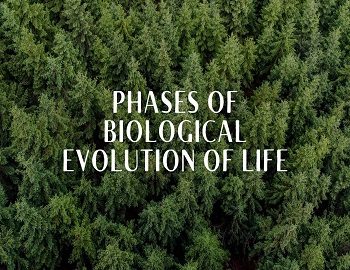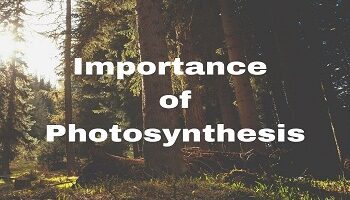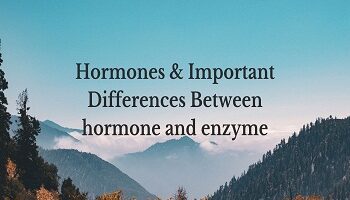Table of Contents
Phases of Biological Evolution of Life:
After the formation of complex macromolecules and nucleoproteins which are actually supposed to be the building molecules of a living system, further events in relation to the origin of life constitute the biological evolution of life which includes the following phases-
Origin of Primordial Life:
It is believed that a number of complex organic and inorganic compounds were present in the extremely hot sea-water in the initial stages. These compounds got aggregated in various combinations and got settled down at the bottom of the sea as large colloidal masses. The fluid sediments, which were rich in colloidal substances formed small globules called coacervates (Pre-cells). The coacervates thus formed were highly organized colloidal system having different types of proteins, nucleoproteins, organic and inorganic molecules suspended in water. They had special organisations due to a definite pattern of arrangement of colloidal particles inside them. Their outer limiting membranes were formed of certain types of fatty acids like lecithin and cephalin which show a great affinity for water. The formation of limiting or plasma membrane might have resulted in differential accumulation of substances inside the coacervates and there might have occurred certain internal reactions. Some of the proteins of coacervates started working like organic catalysts, i.e., enzymes and the coacervates started absorbing organic substances from oceanic soup and became anaerobic heterotrophs. They grew in size and became variable in chemical composition. Finally, they multiplied by breaking down into smaller droplets and led to the formation of protocells.
It is presumed that proteins aggregated around nucleic acids resulting into the forms which resembled the present-day viruses and were probably the first most primitive or primordial life. Thus, the first living cell which appeared had clumps of nucleoproteins i.e. prokaryotic type without a definite nucleus. These cells were similar to present Monera i.e. like bacteria. The second cell type, probably descended from the first cells, was represented by protistans, i.e., they had nucleoprotein clumps condensed into a central mass surrounded by a fine membrane. Thus, the major achievements during this phase were the origin of early viruses, early prokaryotic cells and early eukaryotic cells.
Origin of Autotrophs:
With the gradual increase in the number of heterotrophs, organic nutrients were consumed considerably and this caused a reduction in the natural sources of food in the ocean. Therefore, early living organisms resorted to different methods of obtaining nutrition. During this course, some of the early prokaryotes acquired enzymes which would catalyse the synthesis of simple carbohydrates molecules from inorganic substances of the oceanic water. This was supposed to be the start of autotrophism and energy utilized in this was only obtained from anaerobic breakdown and not from sunlight. Therefore, earth autotrophism was chemoautotrophism which is also shown by sulfur bacteria.
In the meantime, certain autotrophic bacteria synthesized a new substance from a metallo-porphyrin, i.e., magnesium porphyrin of the seawater. This substance was called bacteria-chlorophyll which could absorb sunlight and help these prokaryotes in trapping solar energy and caused the fixation of CO2 into carbohydrates molecules. Such photosynthetic autotrophism is shown by certain marine planktonic sulfur bacteria.
Subsequently, bacteria chlorophyll underwent certain molecular changes which resulted in the development of true chlorophyll which enabled the prokaryotes to synthesize carbohydrates by using water in place of H2S. Thus, the prokaryotic cells which were chemo-autotrophic became converted into true autotrophic which were comparable with the blue-green algae of today.
Origin of Eukaryotic Cells:
With the release of free oxygen into the atmosphere, conditions suitable for aerobic respiration were established upon the earth about 2700 million years ago. The aerobic respiration produces about 20 times more energy in a biological system than anaerobic respiration. Therefore, the prokaryotes gradually modified to become adapted for aerobic mode of respiration. They developed a true nucleus, mitochondria and other cellular organelles. In this way, free living eukaryotes originated in ocean probably about 1500 million years ago. These eukaryotes were like unicellular organisms of today.
- Constituents Of Air And Their Uses
- Air Pollution- Causes, Effects, and Control Measures
- Water Pollution- Causes, Effects, and Control Measures
- Solid Waste Management
- Applications Of Laser And Maser
- Uses of Washing Soda, Bleaching Powder, etc.
- Plant and Animal Cell
- Mitosis: Process and Significance
- Meiosis: Process and Significance
- Modes of Nutrition
- Process of digestion in human beings
- Components of Blood
- Human Heart Important Facts
- Nervous System
- Chemical Coordination and Integration









Comments (No)